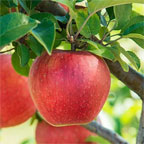- Q.Planting Bee Bee Tree Fall Or Spring - we raise bees, we have 160 acres of farm land, mostly pasture. zone 5. we would like to plant in a ...
- Q.Bee Bee Trees - Do I need too plant both male and female trees in order to get blooms?
- Q.Problems With Evodia Daniellii - Good morning, I wonder if you can help me please. I bought and planted a young Evodia Danielle, about 1.2m tall ...
- Q.Just To Share That The Bee Bee Tree Is Very Attractive To The Lantern Fly. - The trunk of the bee bee tree in my yard has been covered with adult lantern flies the last two ...
Q.planting Bee Bee Tree fall or spring
we raise bees, we have 160 acres of farm land, mostly pasture. zone 5. we would like to plant in a location full sun. we would like to plant a larger tree closer to blooming stage. should we plant in fall or spring? Thank you, Kathleen Leitner, Camphill Ghent 2542 rte 66, Chatham NY 12037
- A.
With a larger tree, I'd go with fall. Even after leaf drop, the roots keep working and will be better able to withstand next year's summer if given a fall head start. Of course, regular watering the first year is important. And I'd resist the temptation to fertilize the first year as well unless a soil test shows deficiencies.
Was this answer useful?00
Q.Bee Bee trees
Do I need too plant both male and female trees in order to get blooms?
- A.
No you do not.
https://questions.gardeningknowhow.com/bee-bee-trees/Was this answer useful?00 Q.Problems with Evodia daniellii
Good morning, I wonder if you can help me please. I bought and planted a young Evodia Danielle, about 1.2m tall & with no leaves at the time, in March/ April. It has done very well so far with 8-10 new leaves which have looked very healthy until the last week or so. The new leaves and small branches have now wilted/drooped, the leaves are curling upwards and turning slightly brown. I live in Le Marche Italy - we have had a lot of rain since April, our soil is clay. Could the tree have been over watered/waterlogged ? The ground now is drying out nicely but the tree does not look very healthy at all. Do you have any thoughts or advice please ? Thank you for your help,
- A.
This shrub prefers well drained soil, so these issues following heavy rains and clay soil are the likely reason for the symptoms you describe.
If the problem is minor, mix compost into the top 8 to 10 inches of soil to add a surge of nutrients.
Add earthworms! Worms eat through compacted soil, helping restore a healthy flow of air and water.
If the problem seems more serious (and you may need an arborist to confirm that), try aerating. By drilling holes into the soil, you break up those compressed particles and provide more air. So, your tree will be able to breathe easier and have better access to nutrients.
Avoid drilling through roots.Was this answer useful?00 - A.
They are very susceptible to a wide range of insecticides. Myself, I would use Bt. (Bacillus thuringiensis) This naturally occurring bacterium is harmless to you, but will devastate the insect population that is feeding on your tree.
https://www.gardeningknowhow.com/plant-problems/pests/spotted-lanternfly-control.htm
https://www.gardeningknowhow.com/plant-problems/pests/pesticides/using-bacillus-thuringiensis.htm
Was this answer useful?00



